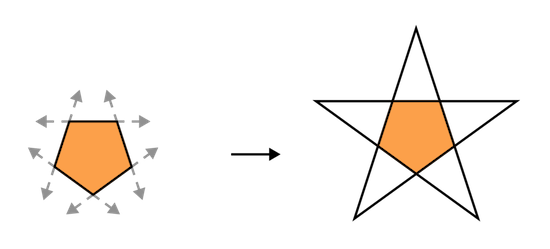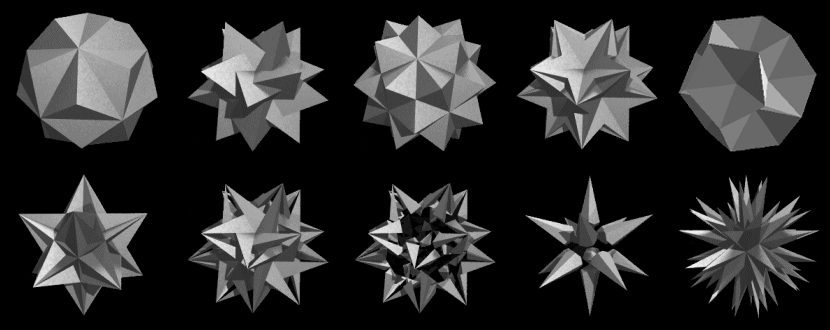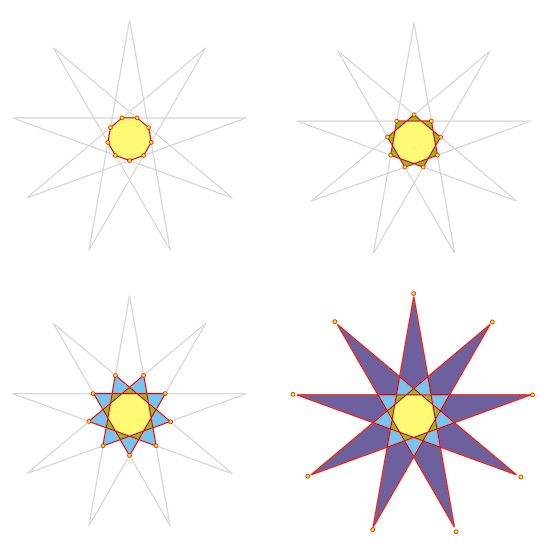Today’s math factoid of the day: there are 59 icosahedra.
I’ve long been fascinated by stellation, the process of extending a polyhedron’s faces to form new structures. The word stellation is from the Latin root for star, so it means to make star-like. The star that graces the upper-left corner of this site is a stellated dodecahedron.
To understand stellations, let’s start with two dimensions. Consider a regular pentagon. If we extend the sides of the pentagon, they will intersect again, making a five-pointed star:

(image from brilliant.org.)
Looked at this way, the original pentagon is just the first 2D area enclosed by the sides’ five infinite lines. When we extend the sides, we’re finding five more areas (the points) enclosed by those same five lines. The five-pointed star is a stellation of the pentagon.
With a pentagon, there are no more stellations: extending the sides even more won’t find any more intersections, so no new areas are enclosed. But more complex shapes can have more stellations. As an example, a 9-sided polygon will have three stellations in sequence:
(image by Tomruen, CC BY-SA 3.0, via Wikimedia Commons.)
Going to three dimensions, stellating a polyhedron doesn’t extend edges, it extends faces. Here’s a video my son Ben made showing a dodecahedron producing three stellations. The faces each lie in one of 12 infinite planes, which intersect in a few different ways, producing new shapes:
The 12-sided dodecahedron only has those three stellations. Extending the planes further doesn’t produce any more intersections, so no new volumes are enclosed. The star on this site is the last (third) stellation of the dodecahedron.
What about the 20-sided icosahedron, how many stellations does it have? Things get much more complicated. In 1938, H.S.M. Coxeter and his co-authors wrote a famous book about the enumeration of the icosahedron’s stellations. First, rules had to be considered about what would count as a stellation, and what would not.
Like the 9-sided polygon, the dodecahedron has a simple linear sequence of stellations, each building on the previous, like nested Russian dolls. But the icosahedron is not so tidy. The book describes intricate rules that I won’t get into for determining what would be considered a stellation.
They counted 58 stellations of the icosahedron. When you include the original icosahedron itself in the list, you get the title of the book: The Fifty-Nine Icosahedra.
Jan Albert Vroegop has a beautiful gallery of all 59, but here is a sampling (from Maurice Starck’s page):

BTW, you can buy 3D-printed stellations, but trigger warning: some of them are called icosahedra when they are really dodecahedra!
from Planet Python
via read more

No comments:
Post a Comment